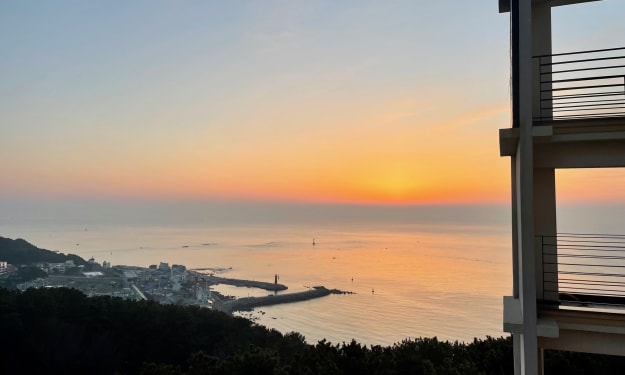Barriers to Implement a Circular Economy
Offshore Wind

In recent years, there has been a substantial shift towards renewable energy sources, and offshore wind power stands out as a promising path for combating climate change and reducing dependency on fossil fuels. While offshore wind advances provide a sustainable answer to energy needs, their full potential in building a circular economy is frequently hampered by a variety of obstacles.
Complexity and Scale of Projects
Offshore wind development necessitates sophisticated engineering, large capital, and lengthy project durations. The sheer size and complexity of such projects make smooth implementation of circular economy practises difficult.
Circular models necessitate a strong network of material recovery, recycling, and repurposing, which may not be in place for large-scale offshore wind farms.
The requirement for advanced technologies and specialised expertise might raise costs, discouraging businesses from adopting circular techniques.
Supply Chain Fragmentation
The division and separation of various stages and entities involved in the manufacturing, distribution, and delivery of goods or services is referred to as supply chain fragmentation.
Supply chain fragmentation happens in the context of offshore wind initiatives when different parties, such as manufacturers, suppliers, contractors, and service providers, operate independently with inadequate communication and coordination.
The offshore wind business is a complex ecosystem with several entities responsible for various parts of offshore wind farm development and operation. Among these stakeholders are:
- Turbine Manufacturers: Companies responsible for designing and producing wind turbine components, such as blades, nacelles, and towers.
- Installation Companies (T&I): Specialized firms that handle the transportation, installation, and commissioning of wind turbines at sea.
- Operation and Maintenance (O&M) Service Providers: Entities tasked with the ongoing monitoring, repair, and maintenance of wind turbines throughout their operational life.
- Grid Operators: Organizations responsible for integrating the electricity generated by offshore wind farms into the larger power grid.
- Government Agencies: Regulatory bodies and government entities overseeing permits, licenses, and compliance for offshore wind projects.
- Research and Development Institutions: Organizations conducting research and innovation to improve technology and practices in the offshore wind sector.
Fragmentation in the offshore wind supply chain can cause a number of issues that impede the implementation of a circular economy:
Communication Gaps: Misunderstandings, delays, and inefficiencies can emerge from a lack of good communication and collaboration among many stakeholders. Turbine makers, for example, may be unaware of the recycling capabilities of particular materials utilised in their components, resulting in suboptimal design choices.
Lack of Coordination: Various phases of the supply chain may not coordinate their efforts towards circularity if coordination is not streamlined. A lack of information sharing between manufacturers and recyclers, for example, might stymie the development of circular design principles.
Limited Data Sharing: Fragmentation can result in insufficient data and information sharing, which is critical for optimising operations and making informed decisions. This can make it difficult to identify opportunities for waste reduction, resource recovery, and recycling.
Missed Circular Opportunities: Potential circular economy opportunities, such as the exchange of waste materials across different phases of the life cycle or the formation of secondary markets for refurbished or recycled components, may be missed by supply chains that are fragmented.

Several solutions can be used to alleviate supply chain fragmentation and promote circular practises in offshore wind development:
- Collaboration Platforms: Creating collaborative platforms that bring stakeholders from various stages of the supply chain together can promote information sharing, idea exchange, and collaborative issue resolution.
- Circular Economy Workshops: Organising workshops and seminars on the ideas of the circular economy can help promote awareness and facilitate debates among stakeholders.
- Supply Chain Integration: Encouraging supply chain integration and closer collaboration across diverse entities can assist align their goals and facilitate collaboration.
- Standardization and Certification: Developing standardised circularity practises and certifications can help set clear expectations and standards for all parties in the offshore wind supply chain.
The offshore wind industry can improve circular practises, minimise waste, and contribute to a more sustainable energy future by overcoming supply chain fragmentation and encouraging collaboration.
Lack of Circular Design and Materials
The design of products and systems with their eventual end-of-life in mind is a major necessity for a circular economy. Unfortunately, the offshore wind business has always prioritised performance and cost-efficiency over circularity. As a result, many wind turbine components are difficult to remove, repair, or recycle, impeding resource circularity.
Policy and Regulatory Challenges
Local, national, and international rules and regulations all have an impact on the implementation of a circular economy in offshore wind farms. Policies that are ambiguous or restrictive can inhibit innovation and investment in circular practises. Furthermore, inconsistencies in waste management and recycling rules across regions may lead to offshore wind components being disposed of in an environmentally hazardous manner, contributing to waste generation.

Economic Considerations
Cost is an important consideration in project selection. Circular economy practises may necessitate larger initial investments or a longer payback period, making them less appealing from a purely financial standpoint. Furthermore, the benefits of the circular economy, such as reduced waste creation and resource preservation, may not always be completely recognised in standard cost-benefit evaluations.
Overcoming Barriers to Implement a Circular Economy
1. Collaboration and Knowledge Sharing
Effective collaboration among supply chain stakeholders can promote the sharing of best practises and information. This can result in more simplified operations, the adoption of circular design concepts, and the use of innovative recycling systems. Governments and business organisations can play an important role in promoting such collaborations and establishing information exchange platforms.
2. Policy Support and Incentives
Governments can foster a favourable climate for circular economy practises by enacting supportive regulations and providing incentives to businesses that employ circular strategies. Tax breaks, grants, and subsidies could promote investments in circular technology, making them more commercially feasible.
3. Circular Design Guidelines
To ensure that goods can be easily disassembled and recycled, the offshore wind industry should prioritise circular design concepts. Collaboration among manufacturers, researchers, and environmental specialists can result in suggestions for building more circular wind turbine components and systems.
4. Technology Advancements
Investing in research and development of improved recycling and material recovery technologies can considerably improve circularity in offshore wind developments. Exploring more efficient recycling procedures for composite materials used in wind turbine blades, for example, can assist in addressing a major circular economy concern.
Conclusion
The shift to a circular economy in offshore wind development is a bold but necessary step towards a more sustainable and resource-efficient future. While some obstacles may present difficulties, proactive collaboration, regulatory backing, circular design principles, and technical improvements can pave the road for a circular offshore wind business. Overcoming these impediments would not only help in the fight against climate change, but will also encourage economic growth and a cleaner environment for future generations.
About ER-Marine
ER-MARINE is committed to combatting climate change, protecting biodiversity, and reducing pollution in South Korea. The organization is making big efforts by offering a variety of solutions focusing on marine biodiversity observations, offshore wind energy development, and smart mooring systems, all with the believe that the circular economy is the way forward. Through actively participating in this area, ER-Marine contributes to the collaborative efforts aimed at conserving our environment and guaranteeing a sustainable future for future generations.
About the Creator
Erik Roelans
I am founder and CEO of ER-MARINE and write about the green energy transition, renewable energy challenges, climate change, offshore wind permitting, policy dialogue, marine biodiversity, renewables and floating offshore wind development.






Comments
There are no comments for this story
Be the first to respond and start the conversation.